Your Interview Karen Francis
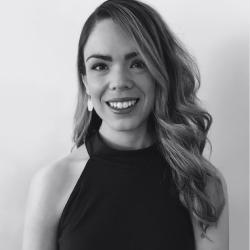
Karen Francis
Designer
United Kingdom
Introduce yourself (name, company, position, country) and tell us how you got into lighting design (including education/qualifications).
My name is Karen Francis, and I’m a Senior Lighting Designer at Hoare Lea in Manchester UK. I became really interested in lighting while studying Interior Design at the University of Central Lancashire, where I earned a first-class honours degree. After that, I was lucky enough to receive the Gilbertson’s Excellence Scholarship, which helped fund my Master’s in Interior Design. While I was in my Master’s program, I concentrated on lighting and upcycling, not fully realising that lighting design could actually be a career path. I reached out to my first employer on LinkedIn after I spotted a beautiful upcycled jam jar light display at the store where I worked. After doing some research, I found out that my future employer had created it. They offered me a job, and within a month, I had moved to London and launched my career as a lighting designer.Over the next eight years, I gained a ton of experience with well-known lighting design firms in London and worked my way up to Senior Designer level.
When COVID hit, it was tough for me, like it was for everyone. I was living in a tiny studio apartment in London, which was all I could afford, and I couldn’t see my friends. I also missed my family back in Liverpool, where I’m from. So, I made the bold choice to take a job in Manchester and move back up north to be closer to them. Plus, I wanted to settle down and start a family, and buying a house in London just wasn’t feasible. Since then, I’ve joined a lighting team at a large building engineering services consultancy in Manchester. Personally, I’m much happier in my personal life now—I’m married, a homeowner, and planning to start a family. My goal is to find a balance between growing my skills and advancing my career while also making time for a happy family life.
Tell us about your work – is there a specific type of project you like to work on or an area you specialise in and why?
I love working in all sorts of sectors. That’s the great thing about the lighting industry—the variety of projects you can dive into. You’re never stuck in just one sector. How many design jobs let you team up with landscape designers on a public realm project and then switch gears to work on the interior of a boutique hotel? The possibilities in this industry are truly endless. Having worked at several different companies, from independent design studios to engineering firms, I’ve tackled most types of projects. But there’s always something new and exciting just around the corner! I think one of the biggest challenges we face as designers is making sure our projects are sustainable while still keeping the human side of design in mind. Our planet has limited resources, so it’s up to us to rethink how we approach design—whether that means reusing CAT A lighting or choosing circular economy products. While designing environmentally sustainable buildings, it's crucial not to overlook the well-being of the occupants. Effective lighting enhances mood, health, and overall experience as well as the environment.
What project are you most proud of and why?
As a huge lover of light art, for me it’s always been to create a conceptual art piece or decorative installation. I was lead designer at NULTY+ for Anamorphosis, a deconstructed light art installation that won the 2015 Philips Strand (now known as Signify) upcycling competition. This piece was showcased at the Royal Institution of Great Britain and later toured with Philips Entertainment Lighting to the ABTT Theatre show at Alexandra Palace. The idea behind Anamorphosis was to communicate the technological advancements in the lighting industry by taking the best of the old and combining it with the ingenuity of the new. We decided to reflect this by exploding the PATT 23 exposing the inner workings and technology which make the fitting so great. The LED lamps by Philips were arranged in a circular 12-point clock pattern and pulsate on and off clockwise around the PATT 23 when viewed from the front. This reinforces the anamorphic nature of what the viewer sees and further cements how the two companies, Strand and Philips have united over time to form the future.
From a project perspective, my standout experience would be the Berghaus head office in Sunderland. I worked on this project during my time at Nulty+, and in 2016, it won the Best Fit Out category at the British Council for Offices Awards and was shortlisted in the Office, Education, and Healthcare category at the Lux Awards that same year. We developed distinct work zones, each with its own identity, which necessitated a flexible lighting solution to accommodate varying light levels for individual work preferences. Our design emphasised the building’s engineering and structure, resulting in a raw, industrial aesthetic in the bright main office areas and breakout spaces. In contrast, the central area, made up of glazed meeting rooms, is softly lit with accent lighting to give a warm, cosy feel. In the showroom we used playful decorative lighting combined with thoughtfully positioned accent illumination to highlight the innovative products on display.
What is the biggest challenge that you have overcome in your career?
Moving from a small design studio to a big prestigious engineering firm was a big challenge for me at first. Even though my job title is the same and my daily tasks are pretty similar, the way things are done here is more analytical. There's a lot more focus on building standards, and I had to learn software like REVIT, Relux, and AGI. I knew Dialux before, but my firm only uses Relux which is a similar lighting design software. I love a good challenge and I'm always up for trying new things, so I've really embraced these changes. I'm also working towards my Chartered Engineer (CEng) status, which my current company is really supportive of. As someone with dyslexia who struggled with academic school subjects, getting this qualification would mean a lot to me. I never thought I could make the jump into the engineering world, so the last few years have been a real eye-opener for me.
This is more of a personal struggle, but I think it’s affected my career too. I look younger than my actual age, which many consider a blessing. But being short and having a baby face hasn’t really helped me out. People often treat you differently based on how old they think you are, and a more mature look is often associated with wisdom. In the workplace, looking young can actually hold you back. Colleagues often assume I’m a fresh grad in my early twenties before I even tell them my job title and age, which can be pretty frustrating for someone with a lot of experience. Having a youthful look can make people question your skills, authority, and status, no matter how experienced and qualified you are. Because of this, I’ve had to work extra hard to show what I bring to the table. I’ve even thought about adding a streak of grey to my hair, like Caitlin Moran, just to change how people see me plus I always wear heels and makeup to work to try to look older. It's not even about looking good—it's about not being mistaken for the intern. How crazy is that?
How does light inspire you?
What captivates me about light is its incredible adaptability and the way it can evoke a wide range of emotions, crafting distinct atmospheres in any setting. I see lighting as an essential part of our built environment, as it not only accentuates structural elements but also transforms the perception of spaces. Whether it’s the soft glow of natural light or the precision of artificial sources, light brings out the textures, colours, and forms that define a space. It’s also fascinating how lighting can often go unnoticed yet still profoundly influence our experience of a room or object. When applied thoughtfully, light has the power to create the feelings and moods we wish to convey. This is why lighting design is so important across various disciplines, including architecture, photography, visual arts, stage design, and film. I find inspiration in the works of creative minds like Es Devlin, James Turrell, and Wes Anderson, who each showcase the transformative potential of light in their own unique way.
What is your message for other Women In Lighting?
Don’t be afraid to speak up and be noticed – and once noticed, don’t apologise for who you are. This is essential for driving change. Senior leadership will never grasp what women truly need in the workplace if they are only surrounded by other men or relying solely on male perspectives. Consider this: Does your office have a lactation room? Are your male colleagues aware of the enhanced maternity leave you receive (if any)? To achieve true gender equality in the workplace, we need to support and protect the rights of pregnant women, those going through adoption, and parents of young children.
“Don’t be afraid to speak up and be noticed – and once noticed, don’t apologise for who you are. This is essential for driving change.”
Selected portfolio:
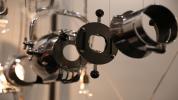
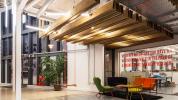
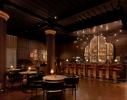
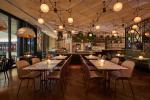


_-_28de80_-_e1e10e7d8508fa9ae439175c2b8ac7851c577430.jpg)

_-_28de80_-_8361d044d2edec1980f143c24d13d209c3de6258.jpg)